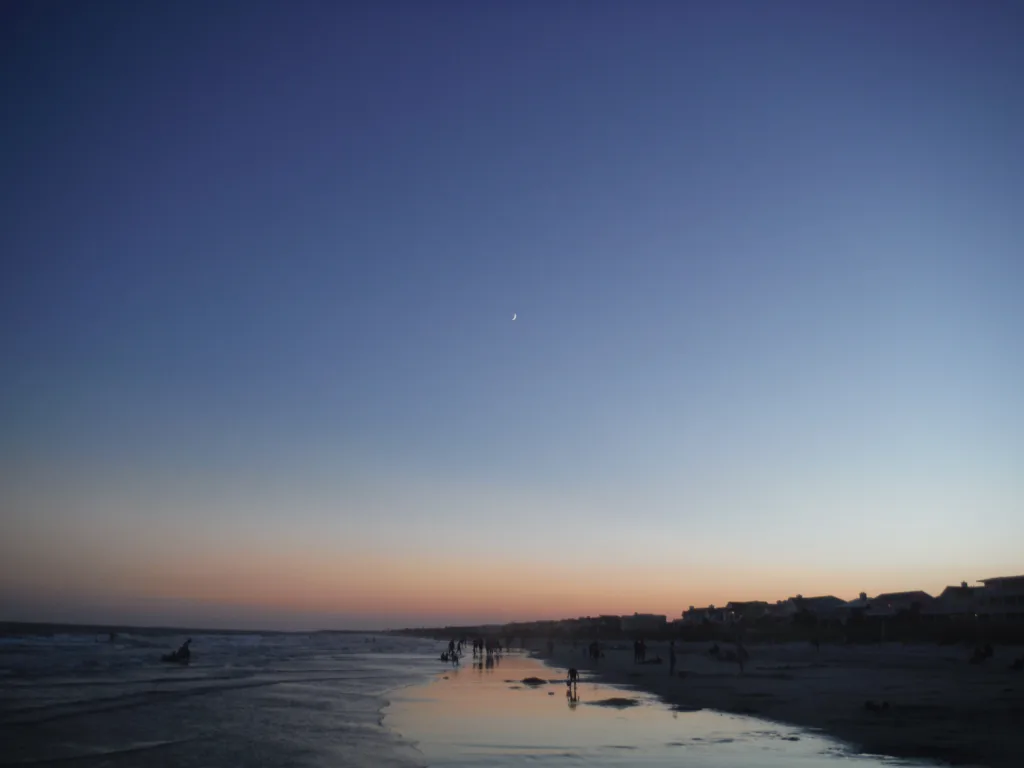Tides are the periodic rise and fall of water levels in the oceans, seas, and other large bodies of water. They are caused by the gravitational pull of the moon and the sun on the Earth’s oceans. The type of tide that is most commonly observed is the semidiurnal tide.
A semidiurnal tide is characterized by two high tides and two low tides each day, with both highs and both lows of roughly equal height. This pattern is caused by the gravitational pull of the moon and the sun on the Earth’s oceans, which creates two bulges of water on opposite sides of the planet. As the Earth rotates, these two bulges move around the planet, causing the two high tides and two low tides each day.
Semidiurnal tides are the most prevalent tidal type and occur alog the entire eastern margin of the Atlantic and along most of North and South America. They are also observed in other parts of the world, including the Mediterranean, the Black Sea, and parts of the Indian and Pacific Oceans.
The height of the tides can vary depending on several factors, including the phase of the moon, the position of the sun and moon in relation to the Earth, and the shape of the coastline and seafloor. In some areas, the tides can be quite dramatic, with differences of several meters between high and low tides.
Semidiurnal tides can have significant impacts on coastal ecosystems and human activities. They can affect the behavior of marine animals and plants, as well as the fishing and shipping industries. In some cases, they can also cause flooding and erosion along the coast.
Despite these impacts, semidiurnal tides are an important natural phenomenon that plays a crucial role in shaping the Earth’s oceans and coastlines. By understanding the mechanisms behind these tides, scientists can better predict and manage their effects on the natural world and human societies.
What Is A Semidiurnal Tide?
A semidiurnal tide is a tidal pattern that occurs twice a day, with two high tides and two low tides each day. This pattern is characterized by the two highs and two lows being approximately the same height. Semidiurnal tides are a common occurrence in many areas around the world, and are a result of the gravitational pull of the moon and the sun on the Earth’s oceans. They can have a significant impact on coastal areas, affecting everything from fishing to beach erosion. a semidiurnal tide is a tidal pattern that occurs twice a day with two high tides and two low tides, and is characterized by the two highs and two lows being abut the same height.

Where Does Semidiurnal Tide Occur?
Semidiurnal tides, which are characterized by two high and two low tides per tidal day, occur along the entire eastern margin of the Atlantic and along most of North and South America. These tides are the most prevalent tidal type and last approximately 24 hours and 50 minutes. It is important to note that semidiurnal tides may vary in intensity and frequency depending on the location and specific oceanographic features of the region.
What Is The Difference Between A Diurnal And Semi-diurnal Tide?
Tides are the periodic rise and fall of sea level caused by the gravitational pull of the moon and the sun on the Earth’s oceans. The main difference between a diurnal and a semidiurnal tide is the number of high and low tides that occur each day.
A diurnal tide exhibits one high and one low tide per day, with a period of roughly 24 hours and 50 minutes. This occurs when the tidal bulge is aligned with the Earth’s axis, resulting in only one high tide and one low tide in a day. Diurnal tides are typically found in coastal areas that are closer to the equator.
On the oter hand, a semidiurnal tide exhibits two high and two low tides each day, with both highs and both lows of roughly equal height. This occurs when the tidal bulge is perpendicular to the Earth’s axis, resulting in two high tides and two low tides each day. Semidiurnal tides are typically found in coastal areas that are further away from the equator.
The main difference between a diurnal and semidiurnal tide is the number of high and low tides per day, with diurnal tides exhibiting one high and one low tide per day, and semidiurnal tides exhibiting two high and two low tides per day.
What Causes A Diurnal Tide?
A diurnal tide is caused by the gravitational pull of the moon and the sun on the Earth’s oceans. The moon’s gravity is stronger than the sun’s, so it has a greater influence on the tides. As the Earth rotates on its axis, the gravitational pull of the moon causes two bulges of water to form on opposite sides of the planet. These bulges move around the Earth as the planet rotates, causing two high tides and two low tides per day.
The specific phenomenon of diurnal tides, as opposed to semi-diurnal or mixed tides, is caused by the tilt of the Earth in relation to the tilt of the moon’s orbital plane. This means that the two bulges of water caused by the moon’s gravity are not directly opposite each other, but are offset by a certain amount. This creates a situation where one of the high tides is much higher than the other, and one of the low tides is much lower than the other.
A diurnal tide is caused by the gravitational pull of the moon on the Earth’s oceans, which creates two bulges of water that move around the planet as it rotates. The specific pattern of diurnal tides is caused by the tilt of the Earth in relation to the moon’s orbital plane.

Conclusion
Semidiurnal tides are the most common type of tides found along the eastern margin of the Atlantic and most of North and South America. They are characterized by two high and two low tides per day, with both highs and lows of roughly equal height. Semidiurnal tides are caused by the tilt of the Earth in relation to the tilt of the moon’s orbital plane. It is important to understand the patterns and characteristics of tides as they have a significant impact on coastal ecosystems, navigation, and recreational activities. By understanding how semidiurnal tides work, we can better prepare and plan for thir effects on our daily lives.
